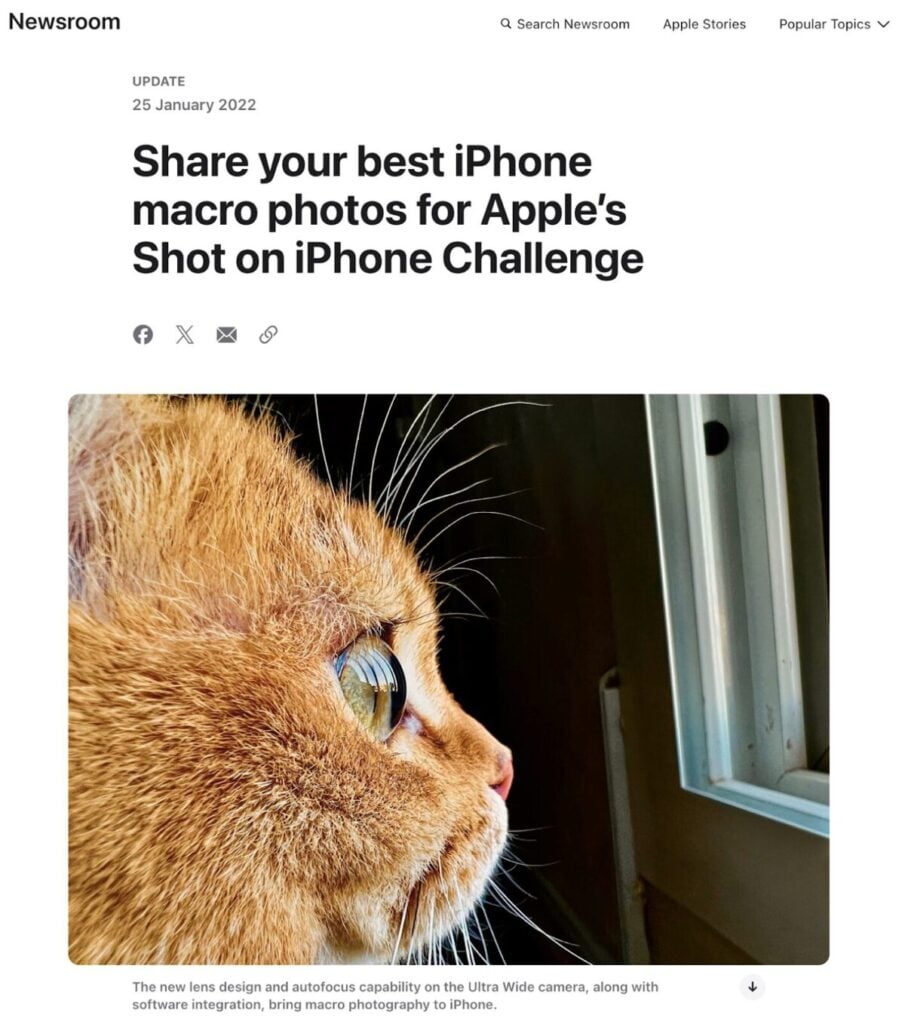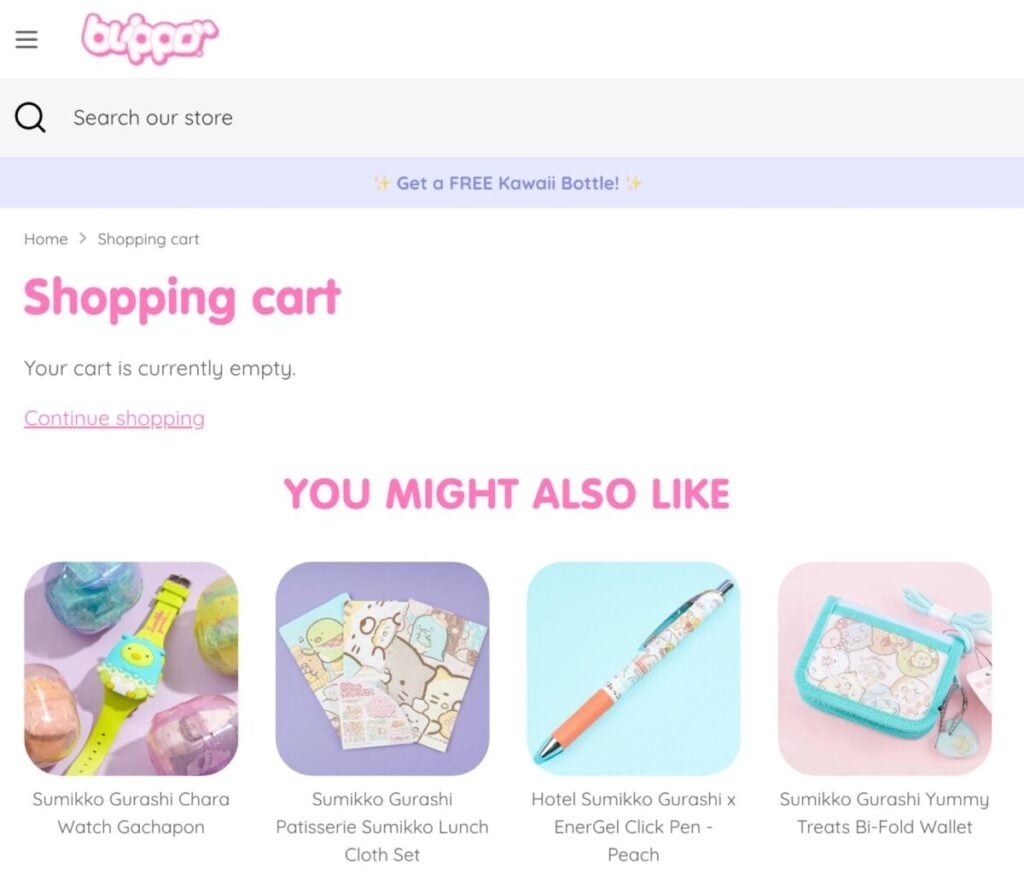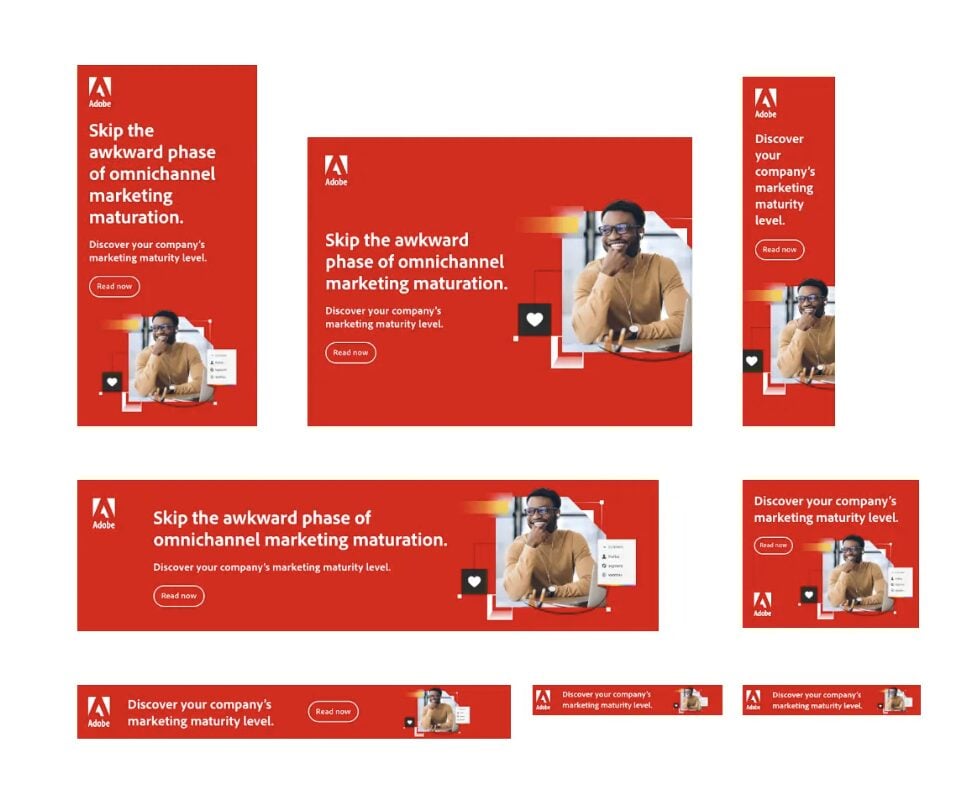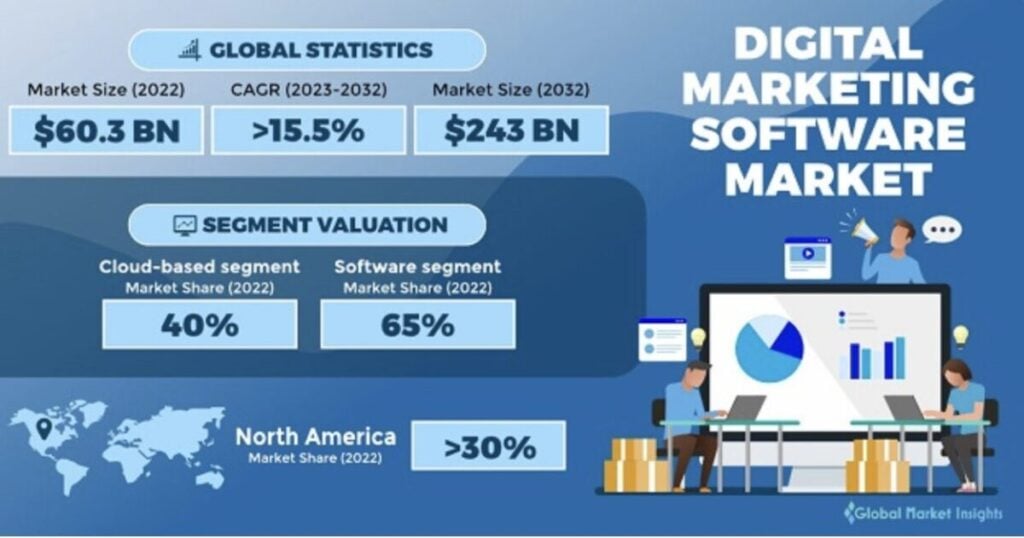In today's digital era, brands are capitalizing on digital marketing to adapt to the fast-paced business environment. Effective digital marketing is vital as it broadens your reach, escalates brand visibility, enlarges your customer base, strengthens customer loyalty, and enhances your ROI. Best of all, it gives you measurable results, allowing you to assess the effectiveness of your marketing efforts.
As you begin your digital marketing journey, you’ll encounter many techniques and methods and you may ask yourself questions like, which one should I use? Can I use multiple types at once? What will the future of digital marketing look like? We’ve got you covered. This article discusses the different types of digital marketing and will demonstrate how you can use one or two (or even three or more) digital marketing types to bolster your overall marketing strategy.
Types of Digital Marketing + Their Pros and Cons
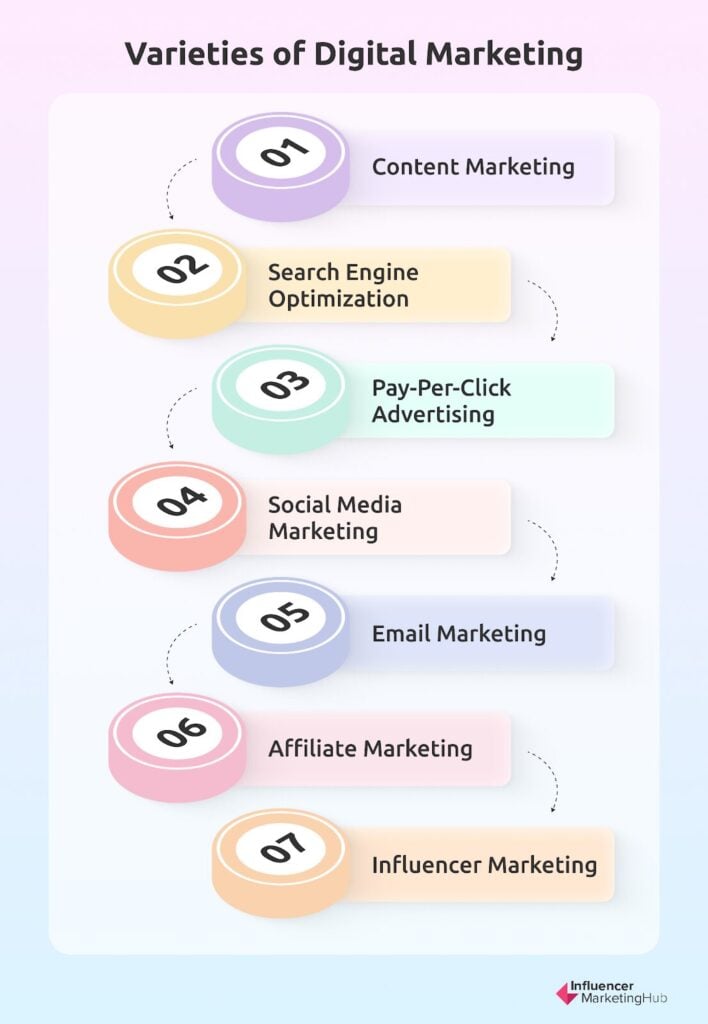
Varieties of Digital Marketing
Content Marketing
Content marketing is a strategy that aims to develop and distribute relevant content, such as blogs, videos, emails, and newsletters to promote a business’s products or services. It is a powerful tool for cultivating brand awareness and fostering trust with your audience, while also serving as an educational resource. It is also a cost-effective approach, being 62% less expensive than traditional marketing methods, yet it generates leads that are six times more likely to convert. This effectiveness is why 73% of B2B marketers and 70% of B2C marketers have made content marketing a crucial component of their overall strategy.
Personalization in content marketing has proven to be a key driver, capable of increasing sales opportunities by as much as 20%. A prime example of this is Coca-Cola’s “Share a Coke” campaign in 2011. This strategy significantly boosted the brand's sales, with a 2.5% increase in the US and a 7% rise in consumption among young adults in Australia. The campaign was so successful that it earned several accolades at the Cannes Lions Awards. The content marketing strategy behind this campaign was multifaceted: it involved creating TV and online video content targeted at teenagers, digital takeovers, and collaborations with influencers and teen idols to create content centered around the theme of “Share a Coke”. The experiential nature of the campaign led to a significant positive impact on the brand's sales.
Pros
- Great for building brand awareness and cultivating customer trust and loyalty.
- A cost-effective means to expand brand reach and target ad-averse consumers.
- Can be used in tandem with or to support other digital marketing tactics.
Cons
- Results aren’t immediate and it can be a time-consuming endeavor.
- The effectiveness of your content marketing tactics will largely depend on your team’s resources and skills.
- Measuring the impact of content marketing can be tricky, given that consumers are likely to encounter your brand in many ways and can engage with multiple touchpoints before they convert.
Search Engine Optimization (SEO)
With SEO, you can improve your site’s ranking on Search Engine Results Pages (SERPs) to boost not just your visibility but also your reach. SEO is also about providing users with better experiences by optimizing your website’s structure and navigation.
There are several types of SEO you can use to enhance your digital marketing efforts. These include on-page and off-page SEO, local SEO, and technical SEO. Each focuses on specific aspects of your website. For example, technical SEO improves your site’s technical aspects so that it becomes more visible, while on-page SEO focuses on optimizing each of your web pages so that they gain more relevant traffic.
One good example of how a company effectively uses SEO for digital marketing is Grammarly. Instead of purchasing traffic, which could cost around $5 million monthly, Grammarly implemented an SEO strategy. This resulted in roughly 7.8 million (or 38.6%) of their website's 22.2 million monthly visits coming from branded organic search traffic (search queries with "Grammarly"). Grammarly's blog, which is regularly updated, contributes 50.3% of the website's traffic. Regular updates to Grammarly's top-performing posts have significantly impacted search traffic. For instance, after updating a post published in 2022, the traffic it receives jumped from around 1.5K per month to approximately 16K.

Ahrefs SEO
Pros
- You get real, measurable results that you can monitor using tools like Google Analytics.
- SEO can boost your targeted traffic and grow your revenue.
- It helps improve your online presence, builds your brand’s authority, and enhances your conversion rate.
Cons
- Like content marketing, it can take some time before you see results.
- You’re bound to encounter relevant keywords with high competition.
Pay-Per-Click (PPC) Advertising
PPC advertising involves bidding on keywords to improve your targeting and get more focused responses from your target audience. It’s an advertising model that’s commonly used in search engines, allowing marketers to bid or pay for ad placement in sponsored links. So, when someone searches for a particular keyword that matches what your brand is offering, your ad will likely appear on top of SERPs. When done well, PPC can lead to significant user engagement, with 65% of high-intent searches resulting in clicks.
Brands that use PPC advertising effectively can achieve significant results. For example, athletic fashion brand 686 leveraged PPC using strategies like location-based targeting and optimizing their shopping campaigns and product feed. This resulted in a boost in their SEM revenue (562% YoY), ROAS (+303%), and over 186% increase in their conversion rate.
Pros
- PPC advertising can improve your brand’s exposure and visibility while enabling you to run multiple campaigns for different keywords.
- You get better click-through rates and increased conversions, which translates to improved revenue.
Cons
- There’s no guarantee that clicks and visits will translate to sales. You will still need to convince visitors to convert them into paying customers.
- Tracking your results can be tricky, especially if you’re running your PPC campaigns on autopilot instead of checking the performance of your ads regularly.
Social Media Marketing (SMM)
Social media is now a powerful marketing tool, allowing businesses to reach a wider audience, increase engagement, and leverage targeted advertising. About 76% of users turn to social media for product research, making it a powerful channel for brand discovery. Furthermore, social platforms enable brands to connect with users in real time, allowing them to build and nurture relationships with customers. Plus, SMM can be used in tandem with other types of digital marketing, such as influencer marketing.
Apple’s “Shot on iPhone” campaign, which was initially launched in 2015, primarily leveraged social media marketing, alongside other digital marketing types like influencer marketing and print ads. This campaign helped the company achieve groundbreaking results, such as increased user engagement (70 million interactions) and improved brand perception. The campaign lasted for years and inspired many other iterations of the "Shot on iPhone" campaign, encompassing phone models like the iPhone X and iPhone XR. Apple further enhanced its social media marketing strategy by creating a specific channel for the campaign, encouraging users to share their own "Shot on iPhone" photos and tag them with the "#shotoniphone" hashtag.
Pros
- Different social platforms provide access to valuable insights and data analytics on your customers.
- Allows brands to create organic content, as well as content that has the potential to become viral.
Cons
- Results aren’t immediate and you can receive unfavorable comments or reviews from your audience that can negatively affect your reputation.
- Requires consistent and proactive effort to maintain audience engagement. That’s because social media, particularly platform algorithms, is prone to change and not being able to pivot your SMM strategy accordingly can result in you losing your competitive advantage and not being relevant to your target audience.
Email Marketing
Whether you’re sending out survey emails, seasonal emails, or welcome emails, email marketing allows brands to establish and strengthen customer relationships, drive brand awareness, and generate leads and conversions. About 46% of marketers believe that email marketing is crucial to lead generation, while 47% consider it essential for lead nurturing. When done effectively, brands that use email marketing can boost their email open rate, grow their contacts list, and significantly increase their sign-up rate.
Pros
- Cost-effective strategy that can potentially generate high ROI.
- Can be automated to reduce workload and increase efficiency.
- A great way to collect customer feedback.
Cons
- Businesses can encounter issues with spam and undelivered and unopened emails.
- You need to comply with email regulations and data privacy laws, which can be tricky if you have a global audience.
Affiliate Marketing
In affiliate marketing, brands pay affiliate partners a commission for every sale they generate. The affiliate partner, such as an influencer, promotes the brand’s products using a unique affiliate link. When someone makes a purchase using that link, the affiliate will earn a commission.
More than 80% of brands already use affiliate marketing and consider it as an effective way to reach and engage new customers. Some of the most well-known and successful affiliate marketing programs include Fiverr’s affiliate program, which offers affiliate partners commissions ranging from 25% to 100% of their customer’s first order. For future orders within a 12-month timeframe, the affiliates receive a 10% revenue share. Note that commission percentages will vary depending on the type of Fiverr products or services that affiliates are promoting. Aside from commissions, affiliates also get access to marketing tools, professional support, and intuitive dashboards.
Pros
- Enables brands to reach a new audience, improve their exposure, and build brand recognition.
- Helps brands collect important information from customers, such as their purchasing behavior, which can help brands gain insights into a particular demographic’s needs and demands.
Cons
- Bad actors who post false advertising can harm your brand’s reputation.
- For businesses, costs can quickly add up. Aside from commission, you may need to pay additional fees, especially if you’re using affiliate networks.
Influencer Marketing
Influencer marketing has greatly changed the marketing landscape, prompting brands to shift from traditional advertising media to digital marketing, strengthening the case for personalization, and using social media platforms to engage their audiences.
About 90% of our survey respondents agree that influencer marketing is an effective marketing strategy. Brands that are leveraging influencer marketing include Nike, which collaborates with content creators, Subaru, which partnered with 20 influencers for their "Meet an Owner" campaign, and Maybelline, which works with beauty influencers to promote their new products.
Pros
- Enables brands to connect on a more personal level with their audience.
- Helps build customer trust and brand credibility, while expanding your brand’s reach.
- Provides access to high-quality user-generated content.
- Delivers targeted marketing.
Cons
- A potentially expensive endeavor as costs can vary greatly, depending on factors like the influencer’s following size and reach, campaign scope, and the industry you’re in.
- Collaborating with the wrong influencers or influencers producing low-quality content can potentially harm your brand.
Additional Digital Marketing Elements to Consider
Aside from the digital marketing types we mentioned, here are some additional digital marketing elements that are worth looking into in 2024:
Lead Nurturing
Lead nurturing focuses on building relationships with your audience throughout the customer journey. It is crucial for building brand awareness, fostering interactions with prospects, and driving conversions. This digital marketing element primarily relies on data to enable brands to deliver personalized customer experiences.
One stellar example of effective lead nurturing in action is how VirtaMed used HubSpot to create a personalized buyer’s journey, align their marketing and sales, and optimize their lead nurturing process. This resulted in a 39% increase in traffic and an 18% increase in organic traffic.
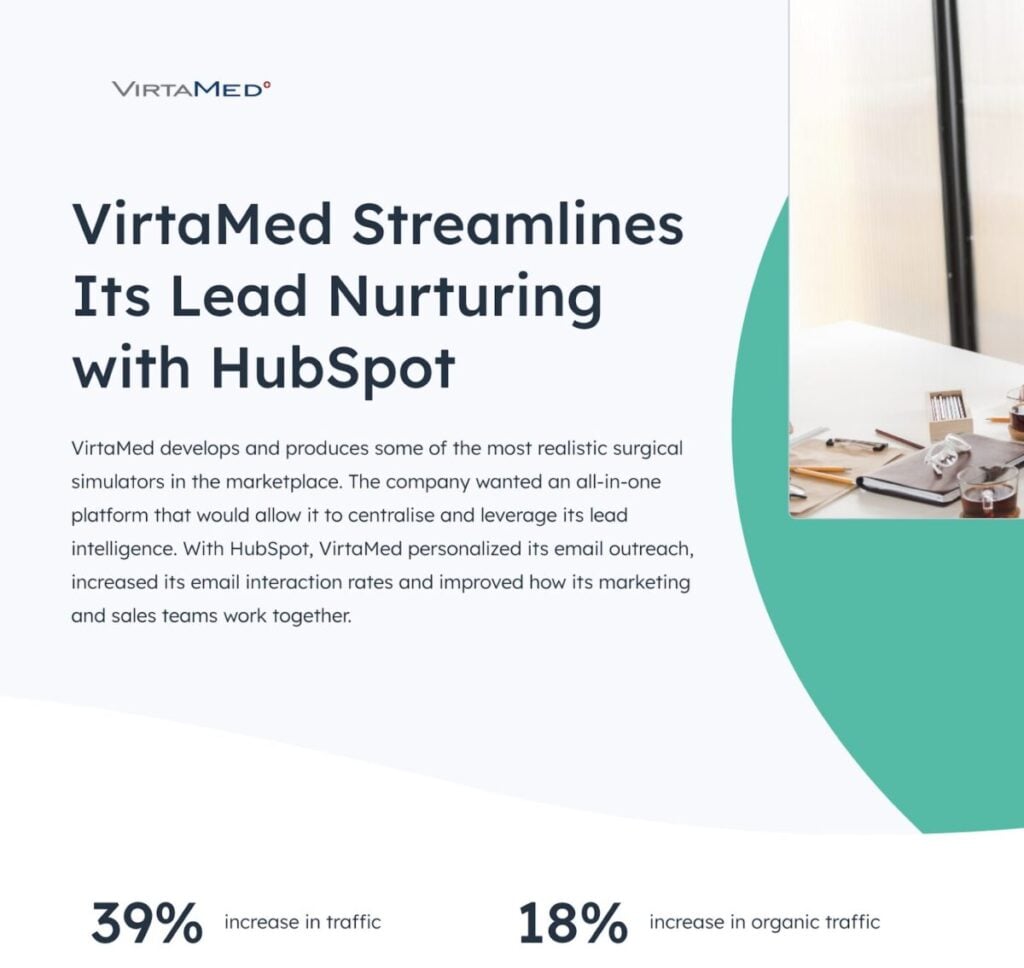
VirtaMed used HubSpot
Native Advertising
Native advertising is a flexible component of digital marketing that brands can utilize across various channels, such as search engines and social media. Essentially, native ads blend into the content of the platform they're on, resembling the platform's regular content rather than standing out as typical advertisements. This tactic is used by numerous global brands like Mercedes Benz. Mercedes' native ad on the Washington Post's website didn't look like a standard ad. Instead, it was designed to resemble an interactive article, weaving seamlessly into the website's content.
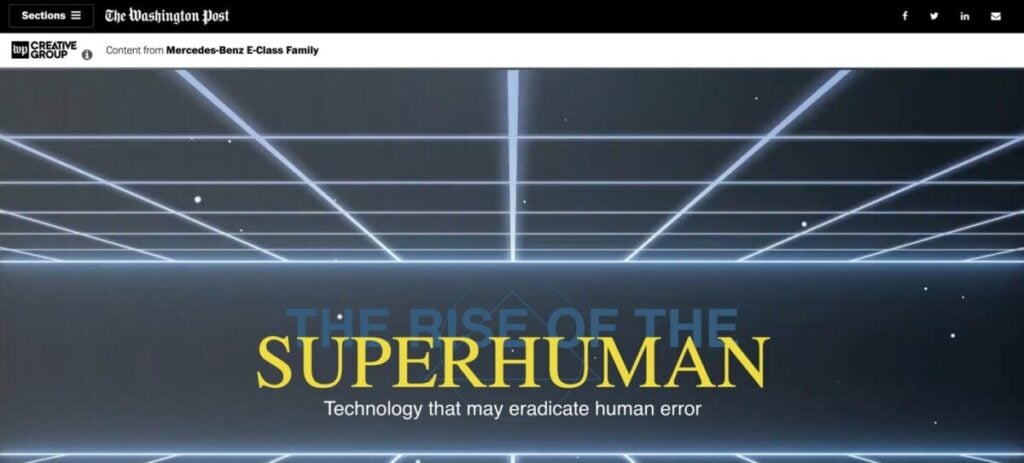
Washington Post Mercedes advertising
Chatbot Marketing
Chatbot marketing involves the use of chatbots to promote your brand’s offerings. Aside from helping you with customer support, chatbots are versatile tools that customers can use to make and track orders. This can also help businesses respond promptly to customer queries, boost customer engagement, bolster lead nurturing, and efficiently share news and updates with their target audience. Some of the best examples of chatbot marketing being used in eCommerce include efforts by the Bank of America and L’Oréal.
Remarketing/Retargeting
This strategy focuses on re-engaging with audiences who have shown interest in your brand before, to inspire specific actions from them. For example, if you’re an eCommerce business, you may have customers who add products to their cart but don’t complete their purchase. You can use the information they provided, such as their email address, to retarget them by reminding them about their cart.
Display Advertising
Display advertising refers to static online ads. Unlike other ad types, display ads use compelling copy coupled with visually appealing graphics, as well as specific display ad sizes. Many brands use these to grow their reach, build brand awareness, and retarget customers. Display ads provide measurable results and can be integrated with other digital marketing channels.
Voice Search Optimization
Voice search refers to the use of speech recognition technology to aid users in their online searches. Instead of manually inputting their queries, they can “speak” to devices like smartphones or smart speakers, which use speech recognition software to convert these spoken queries into text. Businesses can use voice search to boost their local marketing efforts. For instance, by optimizing their profiles in business directories like Google Business, they can increase their visibility in voice search results. Hence, when a user speaks a command like “restaurant near me”, the optimized businesses are more likely to appear in the search results.
Voice search optimization can enhance your brand’s visibility, provide users with better experiences, and drive engagement and conversions, giving you a competitive advantage. For brands to effectively incorporate this into their digital marketing strategies, they need to create content that emulates a natural-sounding tone that ranks for voice search.
Augmented Reality (AR) and Virtual Reality (VR) Marketing
VR and AR enable brands to deliver more engaging immersive experiences to their customers. From being used for virtual tours to virtual try-ons, these extended reality technologies can provide your customers with novel experiences.
As VR and AR technologies become increasingly common, you may consider adding them to your digital marketing strategy but it’s best to do your research first. See which devices are appropriate for your product and niche and determine how such technologies will fit your digital marketing strategy and how these can help you achieve your objectives.
Some of the brands using VR and AR in marketing include GSK, McDonald’s, Walmart, IKEA, and Gucci.
When and How to Use Different Types of Marketing
With so many types of digital marketing, it can be difficult to choose just one type to implement for your business. But the good thing is that you can integrate multiple types to create a more cohesive and effective digital marketing strategy. Here are some actionable tips to guide you:
-
Understand your audience. Start with knowing who your target audience is. This includes their demographics, needs, and pain points. This understanding enables the creation of personalized campaign material that resonates with each audience segment and facilitates better targeting across various channels, such as social media and email marketing. More importantly, knowing your audience provides insights into their behaviors, guiding you to relevant marketing channels. This can help you focus on platforms that your target audience actually uses, instead of spreading efforts thinly across all online channels.
-
Define your digital marketing goals. Identify what you want your brand to achieve and which strategies can best accomplish this. For instance, if you want to build brand awareness and generate high-quality leads, you could consider content marketing, SEO, and influencer marketing.
-
Consider the pros and cons of each platform. Study the strengths and weaknesses of each channel. For example, if you want to improve your website and its SERP ranking, then you can use a combination of SEO and content marketing. If you’re looking to increase audience engagement on your social media platforms, then you can consider social media marketing and influencer marketing. How you use or integrate multiple digital marketing types will depend on what you’re after. If you want to generate more leads, you can leverage a combination of content marketing, targeted PPC ads, and email marketing to collect audience information, capture leads, and nurture them throughout your sales funnel. If you want to boost engagement and drive traffic to your site or social media pages, you can use these channels to host contests, giveaways, or live events. You can also use a combination of SEO and content marketing to provide your audience with high-quality and relevant content, promote your social media pages, and use internal links to redirect them to relevant pages on your site.
-
Be consistent. Regardless of the digital marketing types you plan to implement, you need to create a cohesive experience for your audience. Your social media campaigns should have the same look, feel, and voice as your website or email outreach campaigns. While this article focuses on digital marketing, if you have offline marketing efforts, like print ads, these must also be consistent with your online marketing efforts.
The Future of Digital Marketing and Current Trends
The digital marketing landscape continues to evolve and keeping track of its changes can help you identify gaps in your strategy, determine new ways to adapt to possible risks, and formulate new solutions that enable you to become more agile and competitive.
From AI and extended reality technologies to the rise of video content and the growing need for personalization, here are some of the current and emerging digital marketing trends worth looking into.
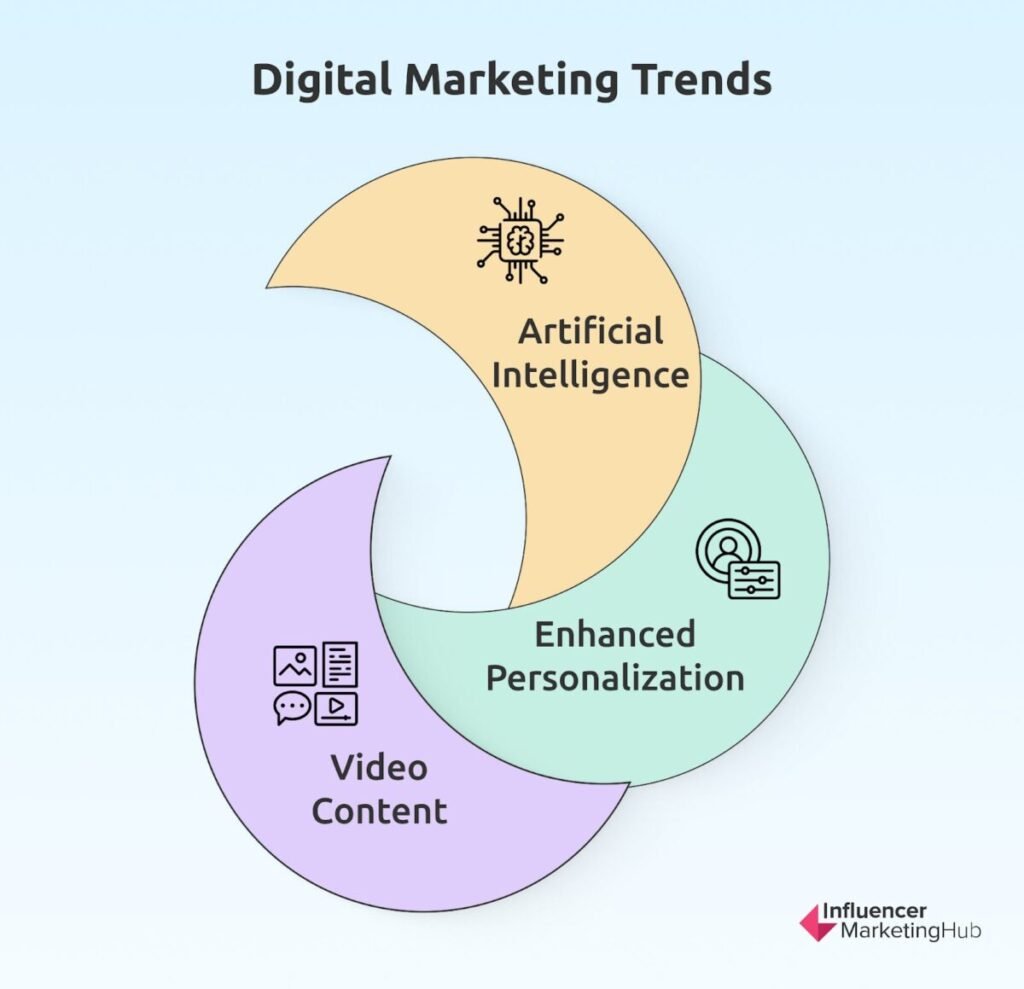
digital marketing trends
1. The Steady Rise of Artificial Intelligence
AI’s use case has greatly expanded over the years, with technologies like generative AI having an increased impact on productivity, particularly in areas such as customer operations, marketing, and sales. From generative AI tools like ChatGPT to AI-powered chatbots for customer service automation, AI is quickly becoming an indispensable component of digital marketing. Aside from these applications, AI will likely be increasingly used in performance marketing and advertising to calibrate advertisements.
It's possible that as the technology continues to be developed, more businesses will be experimenting with their capabilities. In the case of content marketing, for example, businesses are already using generative AI to create web content to support their SEO and social media efforts. It’s likely that in the future, they’ll be using newer generative AI tools, which will provide them with better and more conversational experiences. For instance, we may be seeing more businesses using AI tools that are more focused on ethics and privacy, like Claude AI.
2. Enhanced Personalization
Personalization and digital marketing go hand-in-hand and the former is expected to play an even bigger role in digital marketing to enhance brands’ relationships with customers and edge out the competition. Businesses will likely use technologies like AI and machine learning to tap into customer data, such as past purchases and browsing history, enabling them to offer hyper-personalized recommendations. However, concerns over data privacy, such as data breaches and misuse, still loom over businesses. Aside from being responsible in how you handle customer data, you need to be transparent with your customers. You can do this by providing them with more options on how they would like to share their information and clearly explaining to them how you collect and use data, as well as taking proactive measures to get their consent.
3. Video is the New King
Video content, particularly short-form videos, has gotten huge in the past couple of years thanks to platforms like TikTok, Instagram, and YouTube. Experts predict that it’ll overtake other digital channels in the coming years.
Moreover, the use of AI to create marketing videos is expected to rise. Videos may also play a bigger role in email marketing and newsletters in the future as more brands look into incorporating more short-form videos in their email marketing strategy to deliver better customer experiences.
Additional Resources
The right strategy coupled with the best technology can take your digital marketing efforts to the next level. Below is a list of some of the best tools, platforms, and resources you can use to enhance your digital marketing efforts. These solutions offer various features, such as campaign management, email marketing, and data analytics, enabling you to monitor campaign performance, connect with your target audience, and make better data-driven business decisions.
Social Media Marketing Tools
These tools are designed to help you bolster your social media marketing efforts. They’re capable of automation, scheduling, and increasing audience engagement.
Content Marketing Tools
The content marketing tools listed below can help you create, optimize, and manage engaging content, such as marketing visuals, videos, and more.
SEO Tools
From research to audit, these SEO tools equip you with everything you need to develop and execute a winning SEO strategy. Aside from keyword research, these tools can analyze competitor keywords, track the rank of PPC ads, monitor outbound links, and more.
Email Marketing Tools
These tools help streamline and optimize email marketing. They’re capable of automation, monitoring campaign results, creating offer campaigns, drafting email templates, and managing your mailing lists.
Influencer Marketing Tools
This list includes tools and influencer marketing platforms that can aid you in different aspects of influencer marketing, such as influencer discovery and analysis, relationship and campaign management, and performance tracking.
Data and Analytics Tools
Data and analytics are crucial components that allow you to better understand your target audience and consumer behavior, improve your targeting, enhance custom satisfaction, and measure your campaign performance.
Paid Search and Social Agencies
These agencies help you manage paid advertising, as well as become more effective at reaching your target audience during different funnel stages.
Conclusion
Digital marketing is an ever-evolving field teeming with current and emerging trends. It’s also a growing one that’s projected to reach nearly $690 billion by 2028 due to drivers like increased access to high-speed internet, ongoing advancements in technology, and the growing prevalence of connected devices.
Knowing the different types of digital marketing can help you determine which approaches to implement to enhance your digital marketing strategy. Furthermore, implementing these in tandem with other digital marketing elements and tools will put you in a much better position to take full advantage of digital marketing.
Frequently Asked Questions
Which type of digital marketing is in demand?
It’s no secret that the digital marketing space is in a constant state of flux. While this may be the case, some types of digital marketing remain in demand. These include:
- Social media marketing
- SEO
- Content marketing
- PPC marketing
- Influencer and affiliate marketing
- Email marketing
What are the best tools to use for digital marketing?
“Best” is a subjective term as what might work for you may not be as effective for others. With that said, here are some of the most useful tools that deliver an array of features you can use in digital marketing:
- HubSpot
- Sprout Social
- Ahrefs
- SEMrush
- Google Analytics
How can I develop an effective digital marketing strategy?
An effective digital marketing strategy is a comprehensive plan that defines how you reach, engage, and convert your target audience. It also maps the challenges your brand is currently facing and how you can address these with targeted actions. It starts with how you leverage data, such as customer data and demographics, to make informed decisions.
You’ll also need to audit your current digital marketing efforts across all media so you can have an in-depth understanding of your bottlenecks, identify new growth opportunities, and see which marketing activities best align with your business goals. Aside from monitoring KPIs, you need to review and modify your digital marketing strategy constantly. Some of the most effective digital marketing strategies worth looking into include social media marketing, content marketing, paid advertising, influencer marketing, and SEO.
